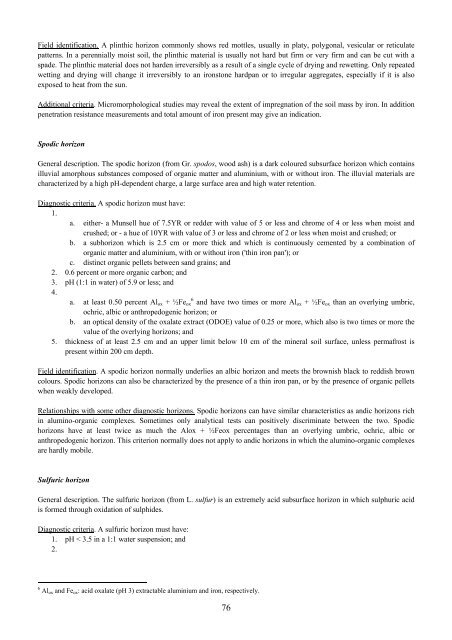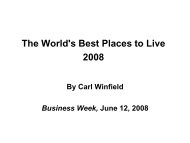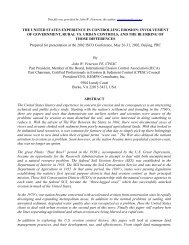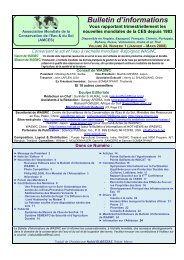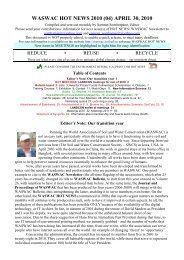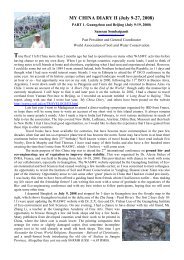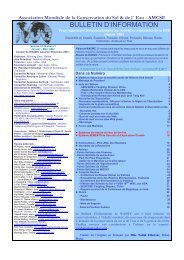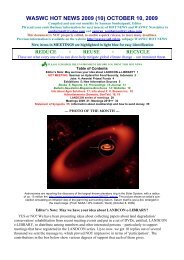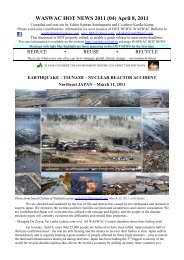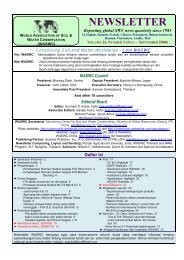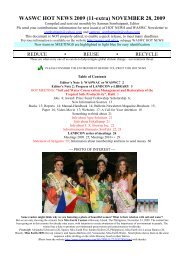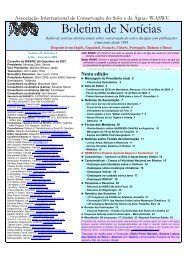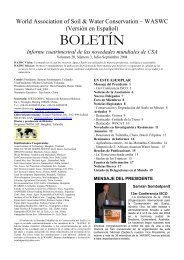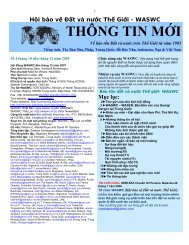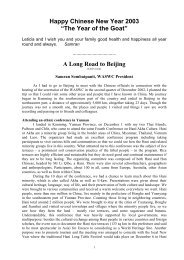Soils of the European Union - European Soil Portal - Europa
Soils of the European Union - European Soil Portal - Europa
Soils of the European Union - European Soil Portal - Europa
Create successful ePaper yourself
Turn your PDF publications into a flip-book with our unique Google optimized e-Paper software.
Field identification. A plinthic horizon commonly shows red mottles, usually in platy, polygonal, vesicular or reticulatepatterns. In a perennially moist soil, <strong>the</strong> plinthic material is usually not hard but firm or very firm and can be cut with aspade. The plinthic material does not harden irreversibly as a result <strong>of</strong> a single cycle <strong>of</strong> drying and rewetting. Only repeatedwetting and drying will change it irreversibly to an ironstone hardpan or to irregular aggregates, especially if it is alsoexposed to heat from <strong>the</strong> sun.Additional criteria. Micromorphological studies may reveal <strong>the</strong> extent <strong>of</strong> impregnation <strong>of</strong> <strong>the</strong> soil mass by iron. In additionpenetration resistance measurements and total amount <strong>of</strong> iron present may give an indication.Spodic horizonGeneral description. The spodic horizon (from Gr. spodos, wood ash) is a dark coloured subsurface horizon which containsilluvial amorphous substances composed <strong>of</strong> organic matter and aluminium, with or without iron. The illuvial materials arecharacterized by a high pH-dependent charge, a large surface area and high water retention.Diagnostic criteria. A spodic horizon must have:1.a. ei<strong>the</strong>r- a Munsell hue <strong>of</strong> 7.5YR or redder with value <strong>of</strong> 5 or less and chrome <strong>of</strong> 4 or less when moist andcrushed; or - a hue <strong>of</strong> 10YR with value <strong>of</strong> 3 or less and chrome <strong>of</strong> 2 or less when moist and crushed; orb. a subhorizon which is 2.5 cm or more thick and which is continuously cemented by a combination <strong>of</strong>organic matter and aluminium, with or without iron ('thin iron pan'); orc. distinct organic pellets between sand grains; and2. 0.6 percent or more organic carbon; and3. pH (1:1 in water) <strong>of</strong> 5.9 or less; and4.a. at least 0.50 percent Al ox + ½Fe ox 6 and have two times or more Al ox + ½Fe ox than an overlying umbric,ochric, albic or anthropedogenic horizon; orb. an optical density <strong>of</strong> <strong>the</strong> oxalate extract (ODOE) value <strong>of</strong> 0.25 or more, which also is two times or more <strong>the</strong>value <strong>of</strong> <strong>the</strong> overlying horizons; and5. thickness <strong>of</strong> at least 2.5 cm and an upper limit below 10 cm <strong>of</strong> <strong>the</strong> mineral soil surface, unless permafrost ispresent within 200 cm depth.Field identification. A spodic horizon normally underlies an albic horizon and meets <strong>the</strong> brownish black to reddish browncolours. Spodic horizons can also be characterized by <strong>the</strong> presence <strong>of</strong> a thin iron pan, or by <strong>the</strong> presence <strong>of</strong> organic pelletswhen weakly developed.Relationships with some o<strong>the</strong>r diagnostic horizons. Spodic horizons can have similar characteristics as andic horizons richin alumino-organic complexes. Sometimes only analytical tests can positively discriminate between <strong>the</strong> two. Spodichorizons have at least twice as much <strong>the</strong> Alox + ½Feox percentages than an overlying umbric, ochric, albic oranthropedogenic horizon. This criterion normally does not apply to andic horizons in which <strong>the</strong> alumino-organic complexesare hardly mobile.Sulfuric horizonGeneral description. The sulfuric horizon (from L. sulfur) is an extremely acid subsurface horizon in which sulphuric acidis formed through oxidation <strong>of</strong> sulphides.Diagnostic criteria. A sulfuric horizon must have:1. pH < 3.5 in a 1:1 water suspension; and2.6 Al ox and Fe ox : acid oxalate (pH 3) extractable aluminium and iron, respectively.76


